By: Elliott Skierszkan and Alberto Contreras-Sanz
Sept 9-10, 2017
The Participants: Julien Renard (Leader), Caitlin Schneider (Leader), Matthew Van Ootsdam, Alberto Contreras-Sanz, Andrew Cavers, Elliott Skierszkan
Looking for help to pull someone out from a 15-m deep crevasse? We’ve got your answers! Well, some at least …
If you want the executive summary of the trip, take a look here. This trip was an offshoot from the VOC Glacier School 2, an instructional trip on glacier travel and crevasse rescue; Zack Wentz led another group of GS2 students to Mt Shuksan. Hopefully Zack’s group will also post a trip report of their tales.
My (Elliott’s) original attempt at taking GS2 as a student back in 2015 had been thwarted by an biblical deluge that flooded creeks and blocked trail access. The only thing we had managed to accomplish at the time was to hike into Cerise Creek, turn around at an unfordable swollen torrent, and then try to reach the Wedgemount Lake Hut near Whistler for overnight shelter, only to realize the hut was full and there was no space for our tentless party.
So, here I was again at a pre-trip meeting for GS2, and happy enough that this time the weather seemed somewhat less ominous and we had a good crew. Caitlin and Julien offered to lead a GS2 party with a special focus on testing self-arrest, setting up anchors while under tension, and working on hauling systems. Julien proposed to “have people jumping into crevasses while roped, and then have them stopped by a second climber self-arresting and setting up a rescue system”. Of course, with both climbers backed up on a bomber anchor! Nobody seemed to object to Julien’s proposition, but I expressed a bit of discomfort at the idea. Julien then broke the ice by saying he’ll jump the first five times, and that sounded more reassuring. The goal was to evaluate the limitations of 2-person rope teams for glacier travel, building on Caitlin and Julien’s experimentations from a similar trip last year.
Well, I wasn’t convinced about having any burning desire to “jump into crevasses”, but I was sure that I wanted to improve my glacier and crevasse rescue skills, so I joined our crew of 6, destined for the Anniversary Glacier behind the very popular Keith’s Hut, off Duffey Lake Road.
The Whistler Gran Fondo cycling race forced an early pickup time: 4:25 AM on Saturday to get out of the city before the highway was closed for the cyclists. We pictured it as good training for the upcoming short days of winter when VOCers are constantly rising before the sun to get out ski touring. The heavy packs full of mountaineering equipment also reminded us of the loaded winter packs and the joy of lightweight summer backpacking.
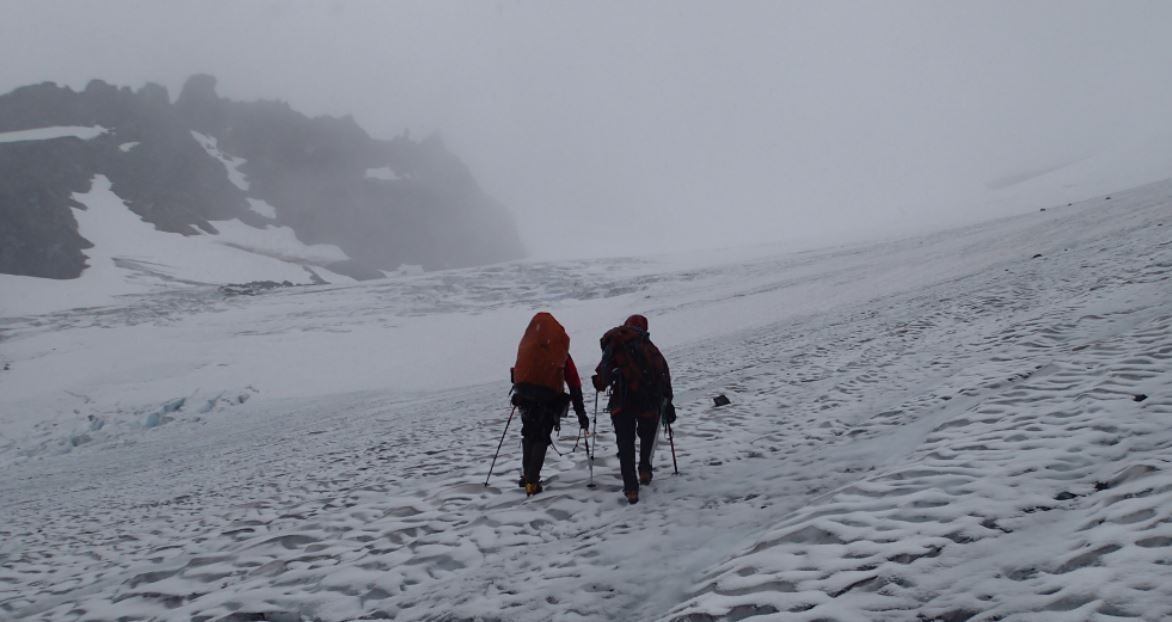
A dusting of fresh snow creating new thin snowbridges on the Anniversary Gl. Photo Matt Van Ootsdam.
We started hiking at the trailhead around 8:30, under light rain, and made it to the hut in good time to have a snack in the warm shelter. But the warm shelter was no place for us: we were planning to camp at the Matier-Joffre col, almost 1,000 m higher, to have more time to spend on the glacier. The hike up was uneventful; we eventually reached the glacier and geared up to ascend to the col. On the way, the rain switched to snow. Julien demonstrated some cramponing techniques on the ascent, and also showed areas with snow bridges that might go unnoticed to the untrained eye. The wind and wet snow were also rapidly building snow bridges; it was easy to picture a storm like this creating treacherous conditions for glacier travel in early Fall!
After reaching the col and ditching our packs, we scouted the nearby crevasse at the head of the Anniversary Glacier, confirming that it was wide and deep enough for our exercises. The first thing we did was build bomber deadman anchors (using pickets) and then rappel into the crevasse to make sure there was enough space for “falling” climbers. Two anchors were build in “series” with the ropes tied in a way that both anchors would take the load when we jumped in. A few mistakes were noted here, such as attaching slings directly onto the metal, too steep of of T, or too shallow holes without good undercuts.
The first drill was then to have one climber stand at the lip of the crevasse, tied into a second further up the glacier, with the rope secured on the bomber anchors we had built. The first climber would fall into the crevasse (see video), while the second was walking in the other direction. We wondered whether the second would actually hold the falling climber using self arrest.
Everyone had a go at this. Occasionally the second climber appeared somewhat successful at arresting the falling first, but more often he would get dragged on the snow until the slack in the system ran out and the anchor held the fall. The most comical incident occurred when Julien was supposed to arrest a falling climber, but the latter’s pull caused Julien to flip onto his back and slide headfirst towards the crevasse, with essentially no hope for self-arrest (until the anchor caught him).
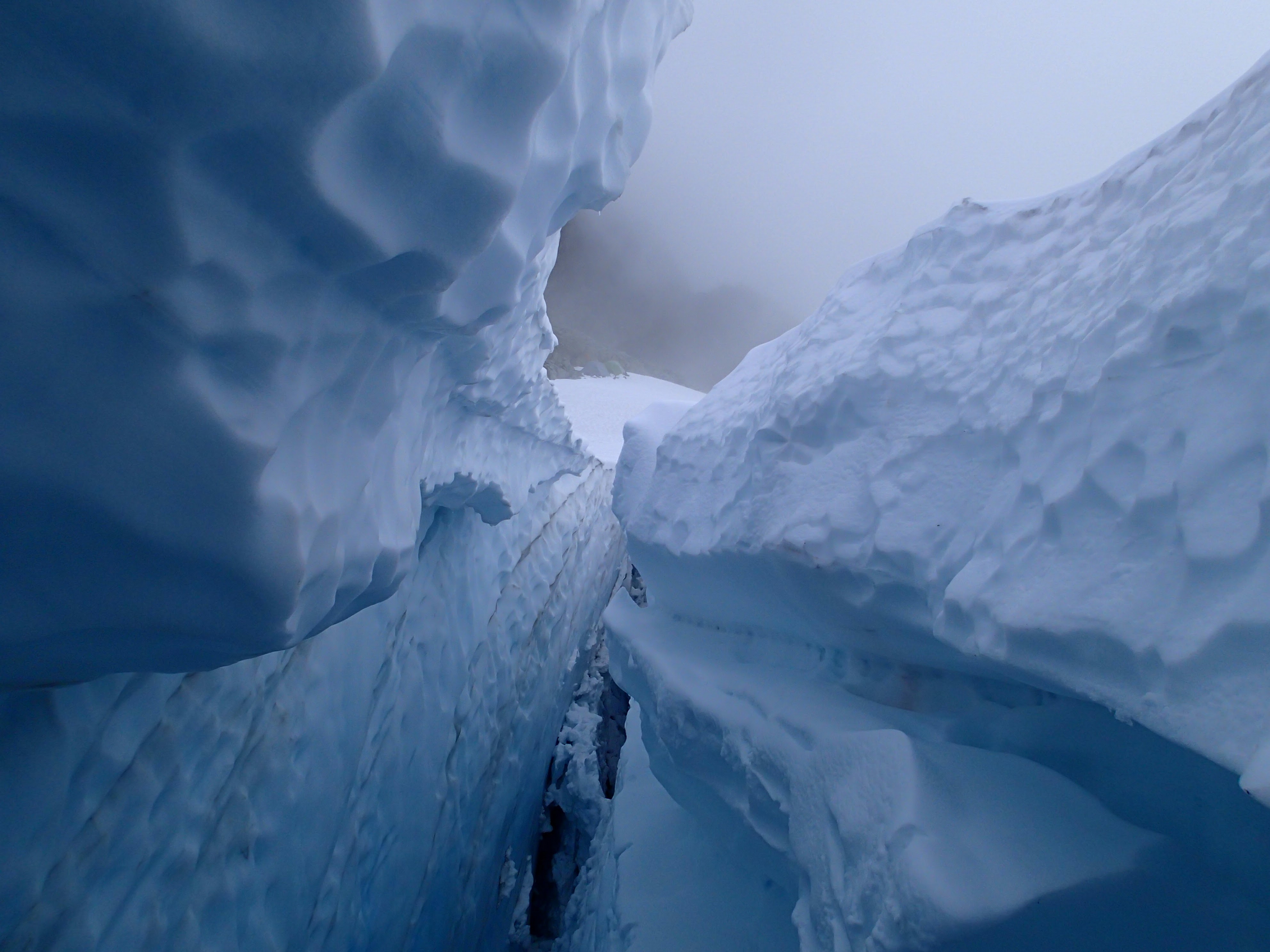
Our two homes for the weekend: (1) a deep dark crevasse (wet, but no wind); and (2) our tents, below the rocks at the Matier-Joffre col (wet, and windy). Photo Matt Van Ootsdam.
For those interested in the details, accounting for rope stretch the second climber in this exercise would have had approximately 3 m of space to attempt self-arrest before the anchor took the load (we did not want too much slack in the system, as there was indeed a real human on the end of the rope!). In a 2-person rope team, there would probably be a longer distance to try and self-arrest, and more friction if knots were tied into the rope at regular intervals between the two climbers. But in any case, our lacklustre self-arrest success rate (in pretty good snow conditions for self arrest, and without heavy packs) was not enticing! We all got reminded of the importance of good self-arresting technique. In future practices, it would be interesting to try with heavy packs, or with skis. Or indeed, on a slope, with perhaps the middle climber falls in.
After some time spent in the sleet and wind at the col, we got cold and were running out of daylight, so we retreated to our packs and set up camp on the snow, sheltered somewhat from the howling wind by the rock bank above. We were all soaked and the drizzle continued; this caused minimal socializing happening in the evening. Dinner, eat, put up the tent, and go to bed. We definitely were not expecting the conditions we encountered, and more than one of us had packed too light.
Next morning, it was “breakfast in bed” as that was the warmest place available, and it delayed the prospect of donning again our wet socks, boots, gloves and jackets. At least the rain had stopped.
On Day 2, our main objectives were to work on hauling systems. We began by rappelling into the crevasses and testing out our self-rescue systems. Generally, we learned that prussiks work most of the time, but are slow and annoying to deal with; a Petzl micro-traxion device used as an ascender is much better! Because the rope ends up completely entrenched in the snow and makes it impossible to slide prussiks or microtraction devices up the rope while under tension, upon arriving at the lip of the crevasse (where the rope is entrenched), it is necessary to solo out of it using crampons and an ice axe. Without crampons and an ice axe, there is no getting out on prussiks/microtractions without outside help! Another learnt tip – tie your ice axes to your harness in a way that you can still self-arrest but with no chances of losing it on a fall.
Next we tried to repeat yesterday’s exercise of self-arresting to stop a falling climber, and then build single-handedly an anchor, and a hauling system, to rescue the fallen climber on a 2-person rope team. I learned that ice screws actually worked reasonably well as a first and fast anchor in late-summer snow conditions (so I would carry one with that purpose in mind). With crampons on, I found it not too difficult to build the anchor, free myself, and set up a hauling system. Without getting into details, problems arose when people loaded the fallen climber using a prussik on the wrong side of the rope (ie between the anchor and them, rather than below them) or when there was no rope available above the anchor to set up a hauling system.
Also, another mistake was to tie yourself to the provisional ice screw anchor – essentially becoming part of the anchor and unable to escape it. You should tie the anchors to the prussiks, or the figure eight/alpine butterfly, but never to the harness. Some of these problems could all be remedied (in a very time-consuming manner) with lots of pulleys and prussiks. I was suprised that I (~180 lbs) was actually able to single-handedly haul Matthew (~160 lbs) on a 3:1 pulley system with pulleys and microtraxion, with him doing minimal helping while hanging of the rope in the crevasse. This was under all ideal conditions though … I wouldn’t count on that happening most of the time.
The other group learnt that a 3:1 set up without actual pulleys is nearly impossible to haul, both due to excessive friction, and the rope entrenching into the lip of the crevasse. They also noticed that prussik-minding pulleys don’t work very well and you almost certainly need someone mind the prussik – apparently they are intended to be used with french prussiks, but these sometimes fail at biting the rope. Lessons to take home: first protect the crevasse lip with an ice axe (don’t forget to build its own deadman so that you don’t accidentally loose it), or backpack. Second, actual pulleys instead of just biners. Third, microtraxion avoids having an extra pulley/prussik and makes life easier. A 5:1 system, although good on paper, would create too much friction and with the dynamic rope stretch, would be ultimately useless. In this circumstances, a 3 person team would have real difficulties pulling someone out who is unable to help. Being a 2 person team would have made it even worse.
Julien and Caitlin also demonstrated their Mammut Rescyou self-rescue system, a crafty 7:1 built-in hauling system that they can use for self rescue on 2-person rope teams both as a rescuer and rescuee. Seemed like a surefire piece of gear to acquire if that sort of travel is used, as all other systems just seemed too unlikely to work.
The real learning step came at the very end: Julien had brought up a mesh bag to fill with snow to use as a load for testing crevasse-rescue systems. We had filled it with perhaps 150-180 lbs of snow and were using it to practice. At the very end of the day, we now wanted to pull it out of the crevasse to head down. In fact, to pull it out, it took five of us hauling on a 2:1 pulley system and Caitlin or Julien down at the lip of the crevasse to re-orient the bag a little ways out from the crevasse’s overhanging bulge. This happened with much effort, thinking, and perhaps half and hour’s time, and was a sobering prospect for how to get a person out of a crevasse if they are totally unable to assist (e.g. being unconscious). It turns out that if a fallen climber is able to aid her rescuers ever so slightly by taking steps up the vertical crevasse wall during the hauling, it makes the job much, much easier. The 7:1 Rescyou would have also made a huge difference.
With that, we were out of time and had to pack out. The hike out was uneventful. We ate the plentiful huckleberries and blueberries and made haste to the cars, getting there just before dark and bracing for the long drive home, with everyone getting home pretty late and tired after a very cold but very informative weekend.
Special thanks to Caitlin and to Julien for taking us up and sharing much of their knowledge with us. I think that everyone learned a lot from this trip and will make good use of the new skills. In general, I came out from this weekend’s drills definitely more aware that hauling systems have a lot of limitations and that a crevasse fall is by all means not a good thing. Under the best of conditions, self-rescue would work, but ideal conditions are not usually how things wind up. It was also really cool (no pun intended) to spend so much time in a crevasse 15-20 m deep, but also pretty scary to imagine the consequences of a fall into such a chasm. I’d recommend anyone venturing out onto glaciers to first spend a little time exploring their crevasses, to gain a bit more awareness of what lies beneath and what are the risks of a fall (especially if unroped!).
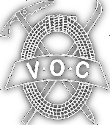
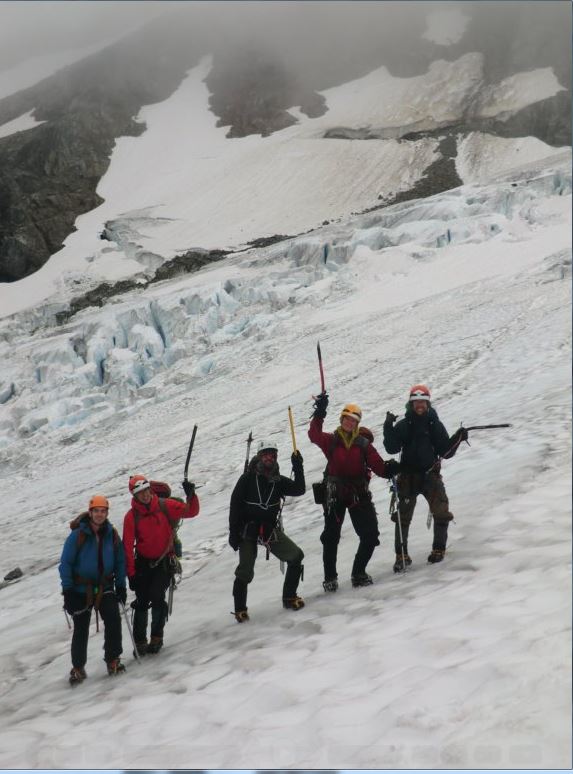
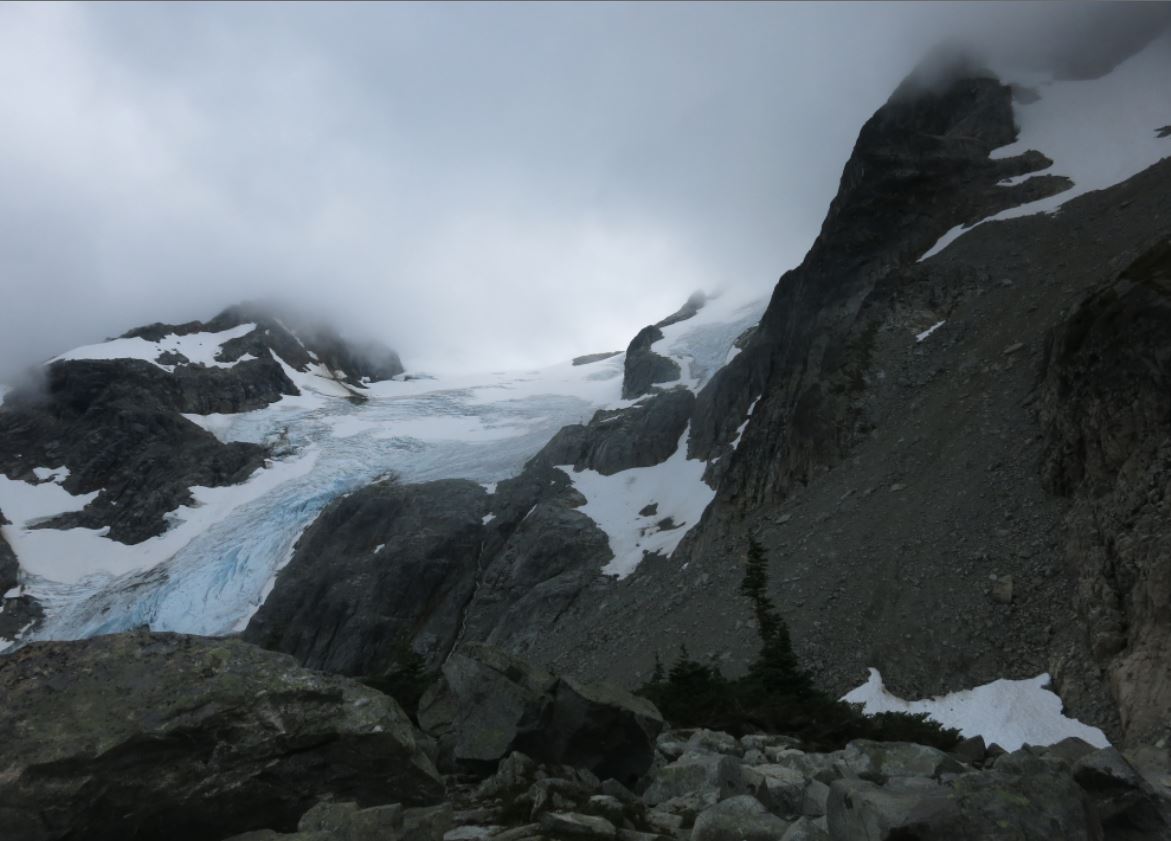
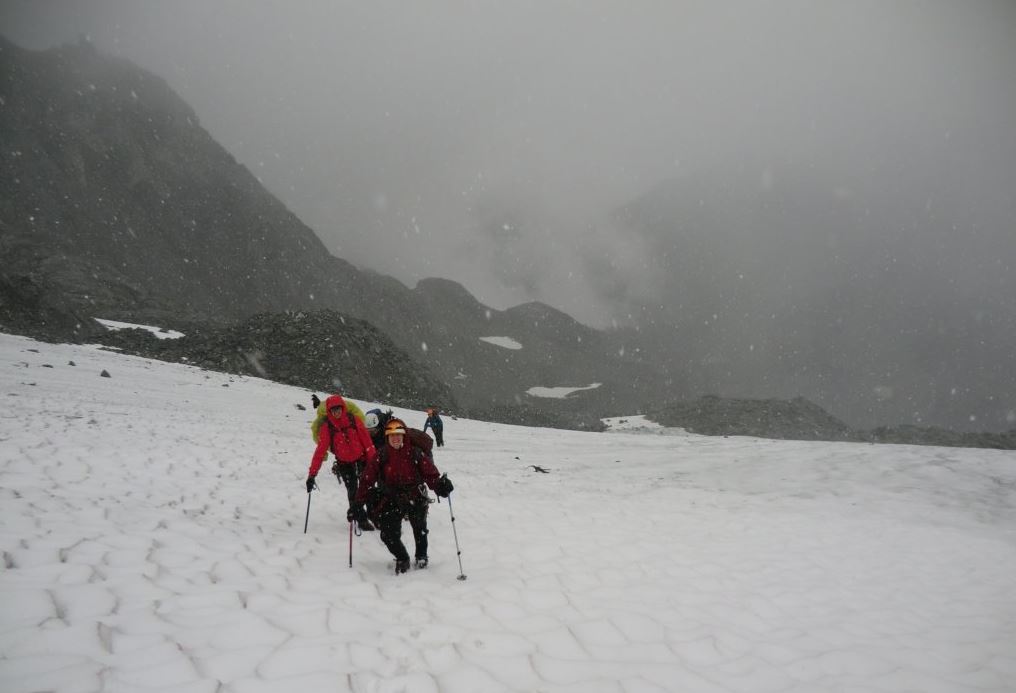

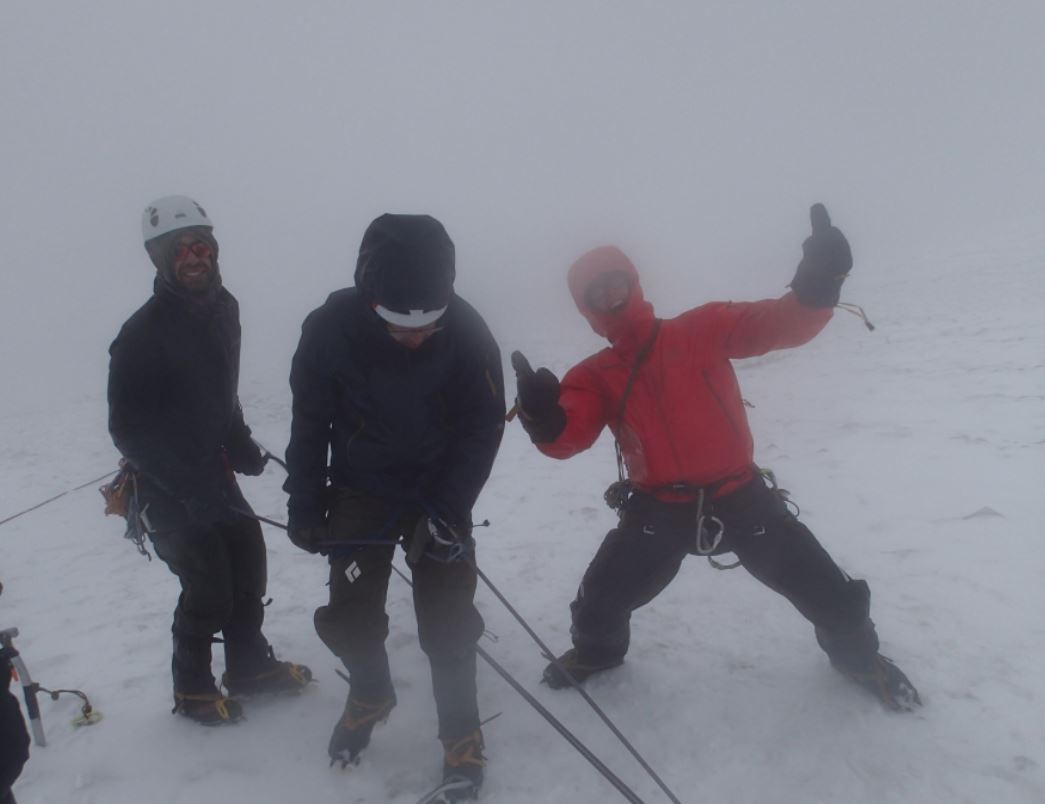
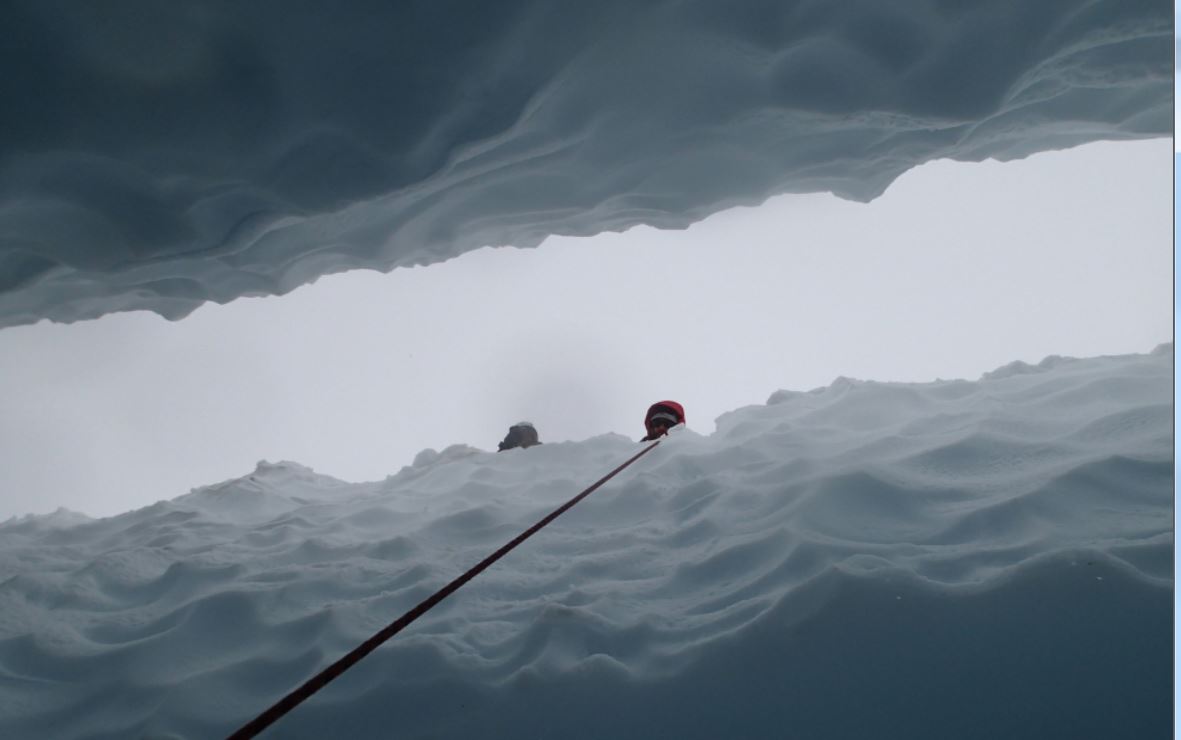
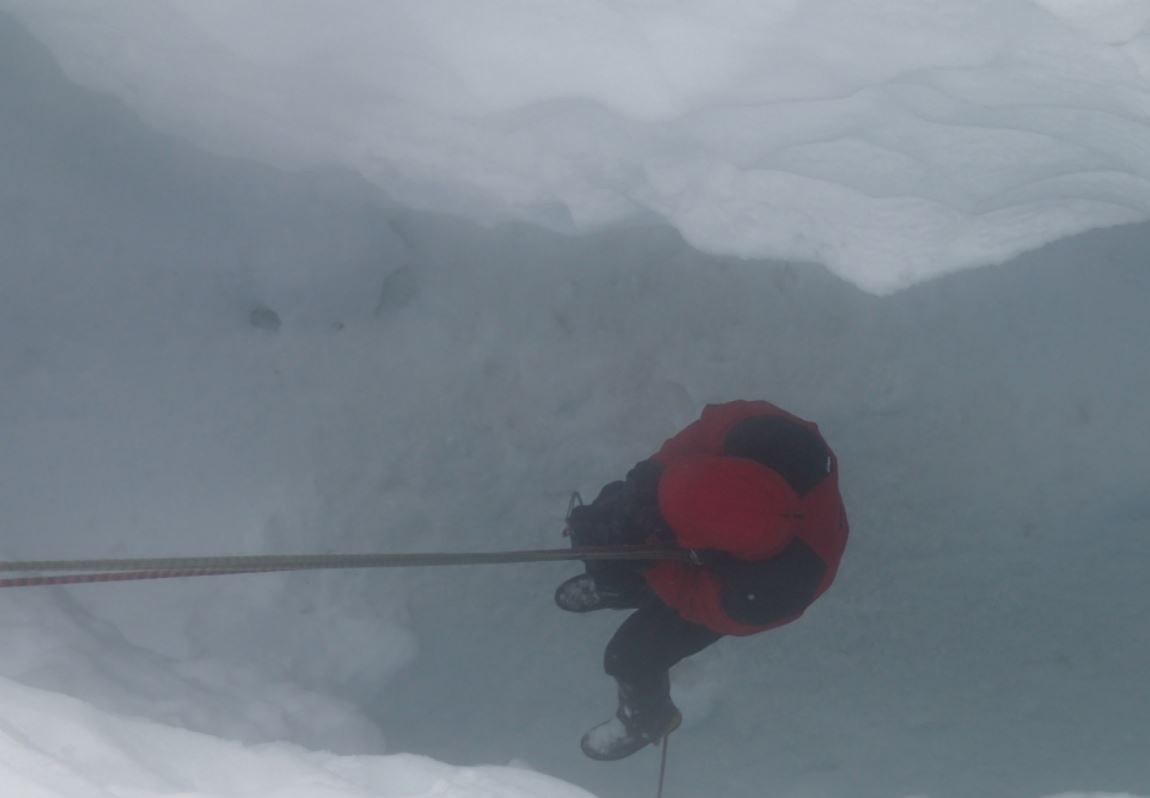

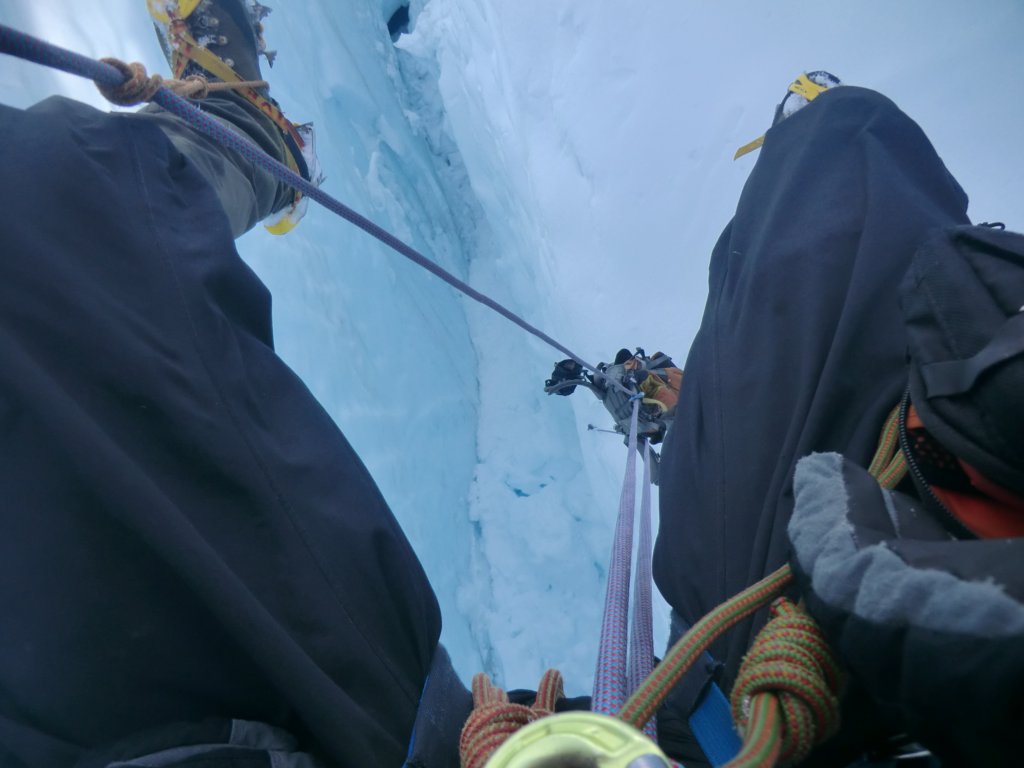
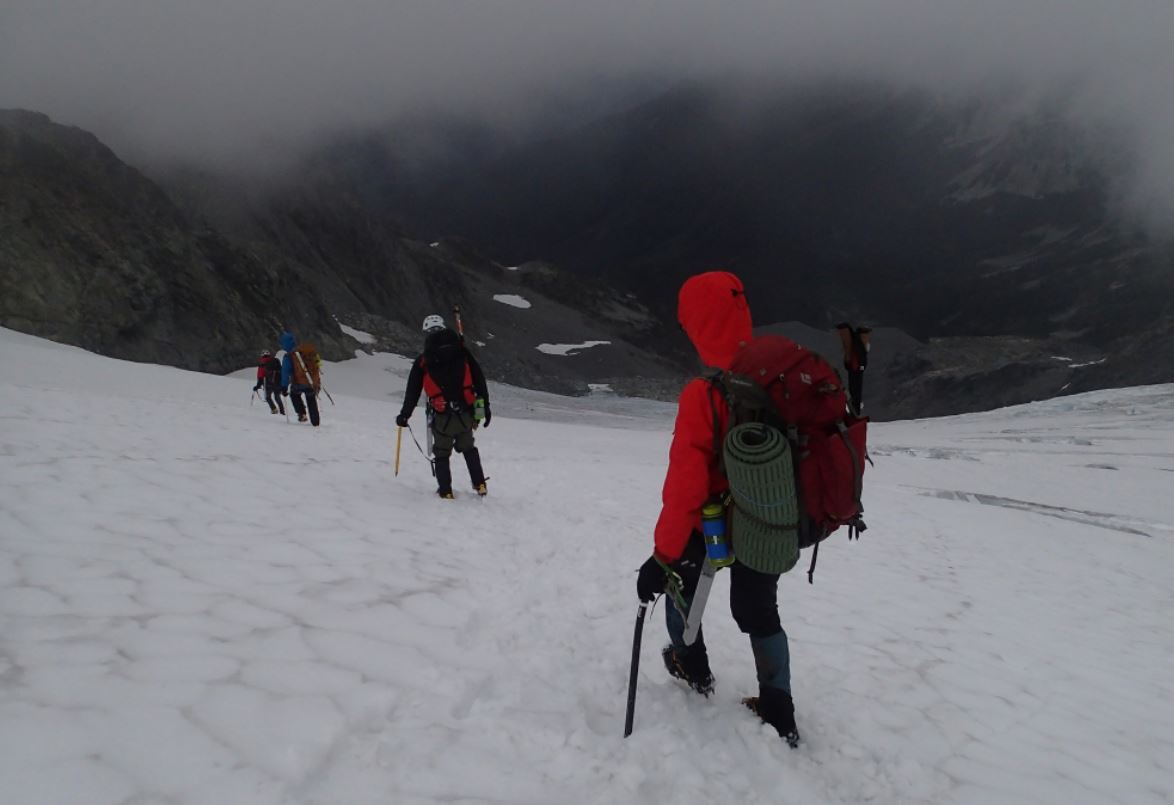
Thanks for the helpful report! In the case of rescuing an injured person who can’t help at all (so a similar situation to the bag of snow at the end), could someone rappel down to them and push from below or redirect the rope a bit to help get them around the bulge or does that not make a difference?
Good question Birgit. Conceivably, a very injured person would quite likely need attendance from a helper rappelling down to them. As for the rescue, I imagine that pushing from below would not be successful. You’d be dangling on a rope, maybe with a prussik on a leg loop, and you would have no leverage to push against. You’d probably be able to dangle down and help them aid their way out, if they can help a little.
Alternatively, definitely redirecting the rope might be necessary. In the case of our bag stuck under a bulge, the most helpful would probably be be build a second anchor, on the opposite site of the crevasse from the first one, and lower a rope to change the direction away from the bulge. I can also see that getting pretty complicated, pretty quick!